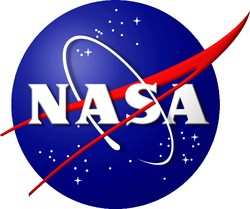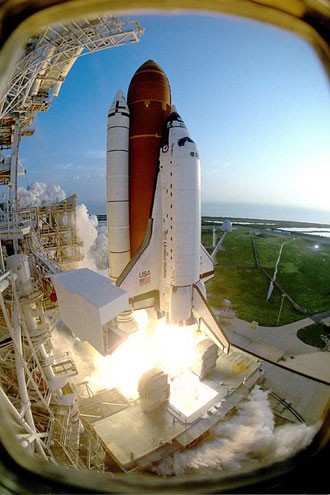Thu, Aug 20, 2009
Hopes To Launch Discovery In Fewer Than Six Tries
 NASA has completed a two-day review
of space shuttle Discovery's readiness for flight and selected Aug.
25 as the official launch date for the STS-128 mission to the
International Space Station. Liftoff is scheduled for 0136 EDT from
NASA's Kennedy Space Center in Florida.
NASA has completed a two-day review
of space shuttle Discovery's readiness for flight and selected Aug.
25 as the official launch date for the STS-128 mission to the
International Space Station. Liftoff is scheduled for 0136 EDT from
NASA's Kennedy Space Center in Florida.
Discovery's launch date was announced after a flight readiness
review at Kennedy. During the meeting, senior NASA and contractor
managers assessed the risks associated with the mission and
determined the shuttle's equipment, support systems and procedures
are ready for launch pending the resolution of one remaining issue.
An orbiter power controller that failed to operate properly was
replaced, and an analysis was completed. The issue is expected to
be closed when final data from the analysis is presented at the
mission management team meeting on Aug. 23.
The readiness review included a thorough discussion about foam
insulation that covers the shuttle's external fuel tank. The foam
helps prevent ice from developing when super-cold propellants are
loaded prior to launch. During shuttle Endeavour's liftoff on July
15, foam separated from the intertank area and the liquid oxygen
tank's ice frost ramps. The foam loss led to a detailed examination
that determined Discovery is acceptable to fly.
"There was an excellent discussion on foam loss that included
input from multiple teams including our NASA safety and engineering
communities," said Bill Gerstenmaier, associate administrator for
Space Operations at NASA Headquarters in Washington, who chaired
the day and a half meeting. "After examining the foam releases on
recent flights and completing a lot of testing and analysis to
improve our understanding of the relative risks, we concluded that
we're ready to go fly. The teams are continuing to learn about foam
and have planned additional tests and analysis to continue to
improve our understanding of foam loss mechanisms and risks."

The 13-day flight will deliver science and storage racks, a
freezer to store research samples, a new sleeping compartment, an
air purification system and a treadmill named after comedian
Stephen Colbert. The name Colbert received the most entries in
NASA's online poll to name the station's Node 3. NASA named the
node Tranquility.
Astronaut Rick Sturckow will command Discovery. He will be
joined by Pilot Kevin Ford and Mission Specialists Pat Forrester,
Jose Hernandez, Danny Olivas and European Space Agency astronaut
Christer Fuglesang. NASA astronaut Nicole Stott will fly to the
complex aboard Discovery to begin a three-month mission as a
station resident. She replaces NASA's Tim Kopra, who will return
home on Discovery.
More News
Terminal Radar Service Area Airspace surrounding designated airports wherein ATC provides radar vectoring, sequencing, and separation on a full-time basis for all IFR and participa>[...]
Very High Frequency (VHF) The frequency band between 30 and 300 MHz. Portions of this band, 108 to 118 MHz, are used for certain NAVAIDs; 118 to 136 MHz are used for civil air/grou>[...]
“From approximately November 2021 through January 2022, Britton-Harr, acting on behalf of AeroVanti, entered into lease-purchase agreements for five Piaggio-manufactured airc>[...]
Also: Virtual FLRAA Prototype, IFR-Capable Autonomous A/C, NS-32 Crew, Golden Dome Missile Defense Bombardier announced that the first production Global 8000 successfully completed>[...]
Aero Linx: The 1-26 Association (Schweizer) The Association’s goal is to foster the helpfulness, the camaraderie, and the opportunity for head-to-head competition that is fou>[...]
 ANN's Daily Aero-Term (05.29.25): Terminal Radar Service Area
ANN's Daily Aero-Term (05.29.25): Terminal Radar Service Area ANN's Daily Aero-Term (05.30.25): Very High Frequency (VHF)
ANN's Daily Aero-Term (05.30.25): Very High Frequency (VHF) Aero-News: Quote of the Day (05.30.25)
Aero-News: Quote of the Day (05.30.25) Airborne 05.23.25: Global 8000, Qatar B747 Accepted, Aviation Merit Badge
Airborne 05.23.25: Global 8000, Qatar B747 Accepted, Aviation Merit Badge ANN's Daily Aero-Linx (05.30.25)
ANN's Daily Aero-Linx (05.30.25)




